Feta cheese is a Greek specialty originally made from a mixture of goat and sheep milk but now sometimes produced with cow's milk. Cured in a saltwater brine, feta emerges with a crumbly texture and a salty, tangy taste. Feta may be eaten raw or cooked. It does not melt well, but it softens when it is heated.
Similar Cheeses Around the World
The Mexican cheese known as Cotija comes in 2 forms: a dry and a semisoft version. The latter is quite similar to feta in both texture and taste. It's usually made from cow or goat milk.
Ricotta salata is an Italian cheese made from sheep milk. It's salted, pressed to squeeze out excess whey, then aged for a short time. It's drier than feta and crumbles into finer pieces, but its overall texture and flavor are similar to that of feta.
Nabulsi cheese, usually made from sheep's milk cheese but occasionally produced with goat's milk, is found in some Middle Eastern groceries. It's a white cheese made in a similar fashion as feta -- although its texture is a bit less crumbly.
You sometimes find goat and/or sheep's milk cheeses labeled "white cheese" imported from various Middle East and eastern European locations. These cheeses are produced in a similar fashion to feta cheese and are essentially interchangeable.
Yogurt cheese, made by draining whey from yogurt until it forms a soft ball, is not as salty as feta but has a similar, if looser, texture.
Other Greek Cheeses
Manouri is made using a byproduct of feta. The drained whey from feta production is added to sheep or goat milk to produce this finely textured white cheese. It's creamier than feta and less salty, but its texture is reminiscent of its more famous cousin.
Salted and aged mizithra (or myzithra) cheese, made from goat or sheep milk, is firmer than feta and suitable for grating.
Related Articles
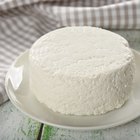
Facts About Cottage Cheese
List of High Temperature Cheeses

Aged Cheeses That Do Not Melt

Low Fat Substitute for Mascarpone

The Best Melting Cheeses

What Types of Cheeses Are Unpasteurized?

Can You Substitute Mascarpone With ...

Facts About Gouda Cheese
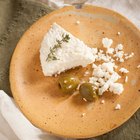
How to Make Queso Fresco
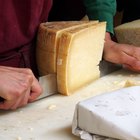
Pecorino Cheese Nutrition

The Difference Between Fresh Cheese & ...
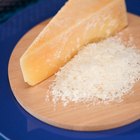
The Differences Between Romano & ...
Can I Substitute Neufchatel for Cream ...
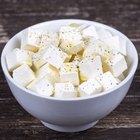
How Much Fat Is in Feta Cheese?

Can You Eat the Skin on Muenster Cheese?

Feta Cheese Nutrition
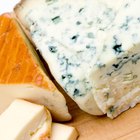
How to Crumble Gorgonzola Cheese

Firm Ricotta Cheese Cannoli Filling
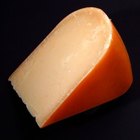
What Is Animal Rennet?

Sources of Calcium in Indian Food
References
Writer Bio
Lori A. Selke has been a professional writer and editor for more than 15 years, touching on topics ranging from LGBT issues to sexuality and sexual health, parenting, alternative health, travel, and food and cooking. Her work has appeared in Curve Magazine, Girlfriends, Libido, The Children's Advocate, Decider.com, The SF Weekly, EthicalFoods.com and GoMag.com.